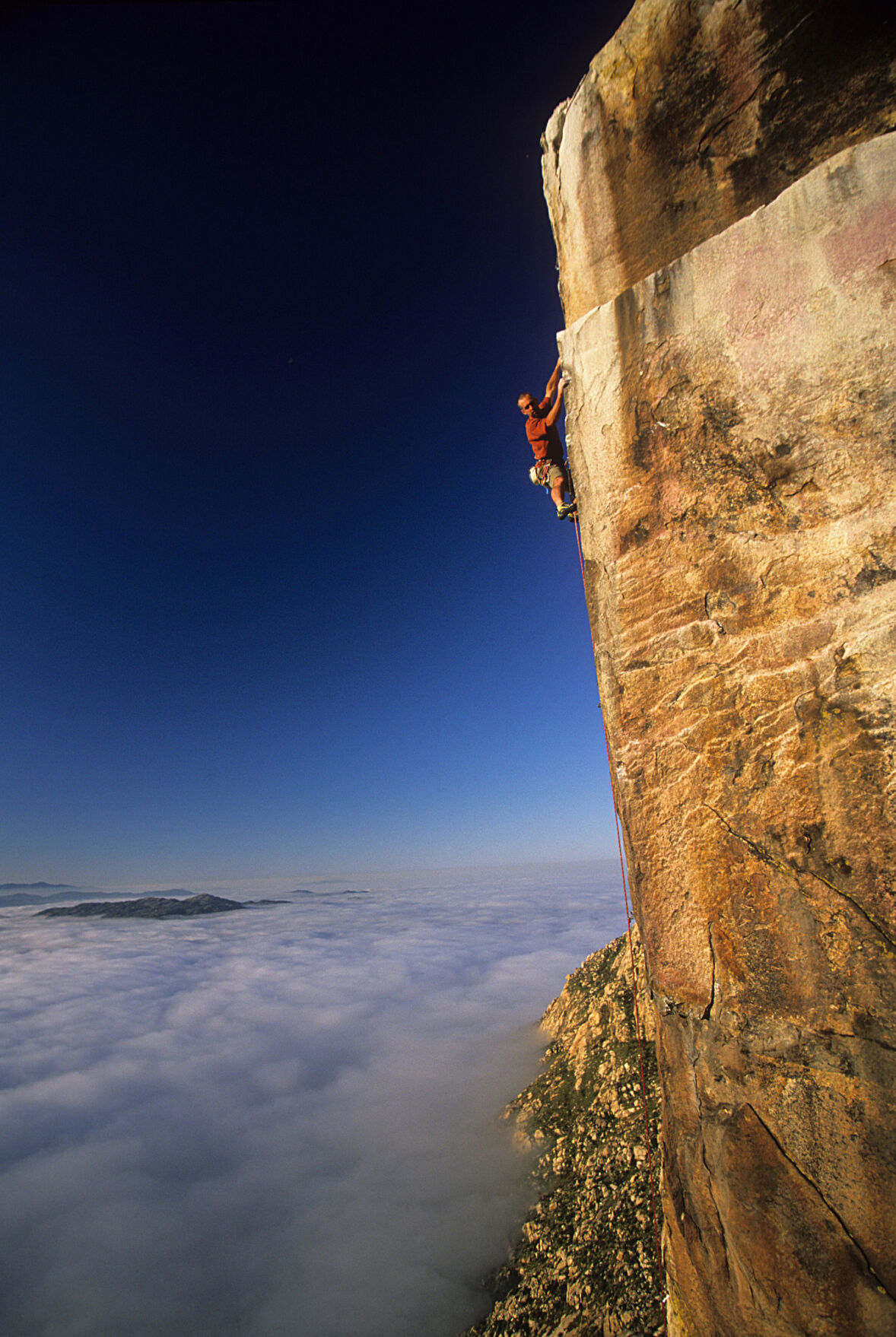
Randy Leavitt on El Cajon Mountain
Photo Credit: Jorge Visser
Watch climbing long enough and you’ll start to see it. A contemporary-style dance takes shape on the rock’s face. The steady, strong reach of a climber’s arms as they grasp each pocket, the delicate balance atop small slopers, and the swaying of their hips with every knee drop.
It’s an art form. A choreography of movements that climbing pioneer Randy Leavitt knows well after 47 years of summiting some of the world’s largest rocks.
“It’s almost like a spiritual experience where you get to do all this stuff that you love in a place that’s beautiful and hard to get to,” says the 62-year-old, ruminating on his time as a big wall climber. “Most days, there’s no one out there at all. You can’t see anyone for as far as you can see.”
A San Diego native, Leavitt has spent most of his life dancing with mountains. He’s known for developing new techniques and establishing novel routes, including the nation’s first 5.15b at Clark Mountain in the Mojave National Preserve.
But here at home, his card is dedicated to El Cajon Mountain. With a 3,677-ft. summit, the route, Leavitt says, requires a limestone-style type of climbing—an abstract form of scaling that requires significant physical strength.
“At first, some of the rock doesn’t look that good, but then you realize [it’s] perfect—almost beyond perfect,” says Leavitt. “If you can imagine climbing up the outside corner of a building? Yeah, it’s like that, way above the valley.”
In the clouds, within the quiet audacity of the mountain, Leavitt is most at home. “It’s the journey. The surge of seeking out climbs,” he says. “It takes you to places that are unexpected, that you never even knew existed. I’m attracted to it; magnetically it’s got my attention.”



















